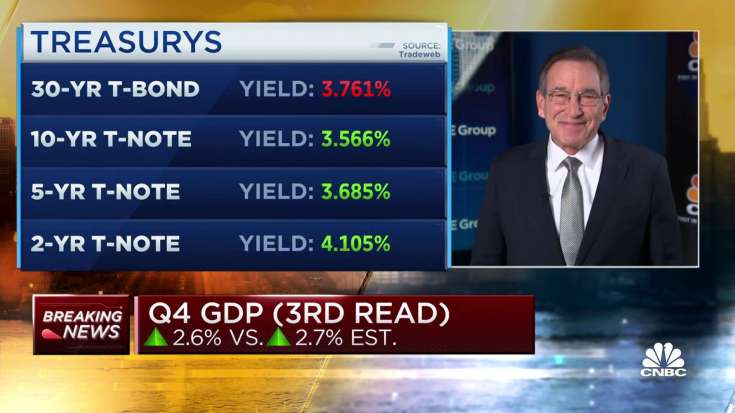
Initial filings for unemployment insurance ticked higher last week but remained generally low in a tight labor market.
Jobless claims for the week ended March 25 totaled 198,000, up 7,000 from the previous period and a bit higher than the 195,000 estimate, the Labor Department reported Thursday.
Though the number was slightly higher than expectations, the total indicates that companies are slow to lay off workers despite expectations that the unemployment rate will rise through the year.
Continuing claims, which run a week behind, edged up 4,000 to 1.689 million. That was below the FactSet estimate for 1.6935 million.
The four-week moving average of weekly claims, which smooths volatility in the numbers, rose slightly to 198,250, but has been below 200,000 since mid-January.
The relatively benign claims numbers come despite aggressive Federal Reserve efforts to slow down inflation. In large part, the central bank is targeting a labor market beset by a sharp supply-demand imbalance in which there are nearly two open jobs for every available worker.
According to estimates last week, central bankers expect the unemployment rate to rise to 4.5% this year, from its current 3.6% level. Doing so would require the loss of more than 540,000 jobs, according to an Atlanta Fed calculator.
“Although hiring in the U.S. economy remains strong, there appears to be the potential for more slack in hiring trends set for the spring and summer months,” said Stuart Hoffman, senior economic advisor at PNC. “This is not to say that economic conditions are set to collapse entirely. Rather, any newly laid-off workers are not as likely to be so quickly rehired as businesses assess their plans to weather what we expect will be a mild recession in the second half of this year.”
A separate economic report Thursday showed that growth was a bit less strong to close 2022 than previously thought.
The final Commerce Department reading for gross domestic product showed the economy grew at a 2.6% annualized rate in the fourth quarter, slightly below the previous estimate of 2.7%. That change came primarily due to downward revisions in consumer spending and exports, the department said.
Growth likely accelerated for the first three months of 2023, according to the Atlanta Fed’s GDPNow tracker. That gauge shows GDP rising at a 3.2% pace.
Markets reacted little to the fresh batch of data, with futures pointing to a higher open on Wall Street.


